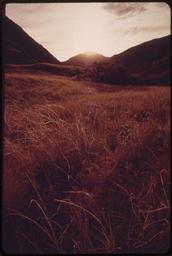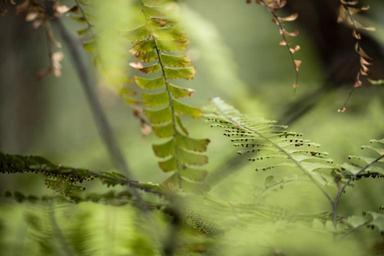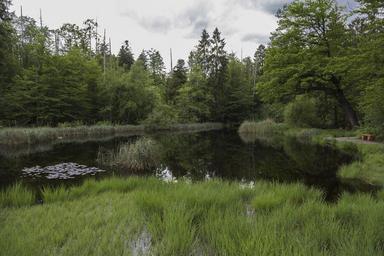Introduction
Nature photography is an art form that transcends mere documentation; it's a powerful, emotional expression of the world around us. As photographers, we have the unique ability to capture sublime contrasts in nature, creating images that evoke feelings ranging from awe to melancholy. The interplay between decay and growth, light and shadow, and life and death can tell profound human narratives through our lenses. This article explores the myriad ways we can use contrast in nature photography for emotional impact, drawing on themes such as http://evergreennotes170.bearsfanteamshop.com/reaching-for-new-heights-aspirational-themes-in-photography self-exploration, personal growth, and artistic expression.
In this long-form article, we will delve into various subcategories of nature photography—ranging from fine art photography to aesthetic photography—and reveal how these styles can be employed to convey emotional depth. We will also examine techniques like shutter speed experiments and the use of self-timers in creating timeless self-portraits within natural settings. Ultimately, this exploration aims to inspire you to create your own compelling visual narratives that reflect your journey through life.
Sublime Contrast in Nature Photography for Emotional Impact
When we speak of "sublime contrast" in nature photography, we're referring to the tension created by opposing elements found within a single frame. This could involve juxtaposing vibrant vegetation against crumbling ruins or capturing the first bloom against a backdrop of decay. These contrasting elements often elicit strong emotions from viewers and prompt them to reflect on deeper themes such as resilience and transience.
The Essence of Contrast in Nature Photography
Contrast serves not just as a visual tool but also as a narrative device. By showcasing the dichotomy between life and decay, photographers can explore themes such as:
- The cycle of life Nature reclaiming spaces once dominated by human structures Personal stories reflected through physical environments
This approach allows for rich storytelling where every image becomes more than just a photograph; it transforms into an exploration of human life itself.
Exploring Self-Portrait Photography Amidst Nature
Self-portrait photography is an intimate genre that allows individuals to communicate their inner thoughts and emotions through visual means. Using nature as a backdrop adds layers to these personal narratives.
The Role of Nature in Self-Portraits
Incorporating natural settings into self-portraits can enhance emotional resonance. For instance:

- Moss-Covered Ruins: Capturing oneself amidst moss-covered ruins evokes feelings of nostalgia and introspection. Reaching for the Sky: Posing with arms extended towards the sky can symbolize hope and aspiration, contrasting with decaying structures nearby.
These elements encourage viewers to consider their own narratives alongside those depicted in the photographs.
Creating Timeless Self-Portraits with Nature
Timeless self-portraits are not merely about capturing a moment; they encapsulate broader life themes:
Personal Growth: Documenting changes over time against nature's cyclical patterns provides insight into one's evolution. Artistic Expression: Utilizing natural landscapes enables artists to showcase their creativity while reflecting on their experiences.By employing techniques such as using a self-timer or experimenting with different shutter speeds, one can achieve unique compositions that provoke thought.
Fine Art Photography: Elevating Nature’s Beauty
Fine art photography elevates ordinary scenes into extraordinary works of art by focusing on aesthetic value rather than just documentation.
Aesthetic Photography Techniques
Aesthetic photography emphasizes beauty through composition, color schemes, and subject matter. Consider these approaches:
- Black and White Photography: Stripping color away highlights contrasts between light and shadow while enhancing textures. Tarnished Color Photography: Deliberately manipulating colors creates evocative images that speak to decay yet also highlight beauty amid deterioration.
These techniques push boundaries beyond traditional landscape photography and invite viewers into an interpretive experience.
Symbolic Representations in Fine Art
Symbolism plays a crucial role in fine art photography related to nature:
- Overgrown ruins may symbolize forgotten histories. Blooming flowers emerging from concrete signify resilience amidst adversity.
Such symbolic imagery encourages deeper reflection on life's complexities while fostering emotional connections.
The Interplay Between Nature and Decay
Decaying structures offer rich opportunities for storytelling within nature photography.
Capturing Decay Through Poetic Imagery
Capturing decay doesn’t have to be grim; it can be poetic:
Withering Beauty: Highlighting faded flowers against weathered walls reflects both fragility and strength. Nature Reclaiming Spaces: Documenting overgrown ruins showcases how life perseveres even after destruction.This duality invites viewers into conversations about change—both inevitable yet beautiful—within our lives too.
Life Themes Reflected Through Aging Structures
Photographing aging structures reveals themes related directly back to human experiences:
- The passage of time Love lost or gained Community transformations
Each click captures moments steeped in history while resonating emotionally with audiences who recognize similar journeys within themselves.
Joyful Photography Amidst Ruins
While decay often evokes somber emotions, there are opportunities for joyful expressions amidst ruins too.
Finding Joy in Unexpected Places
Photography needn't be an exercise solely focused on loss; it can celebrate resiliency:
Photographing blooming flowers against crumbling brick conveys joy amid adversity. Capturing laughter shared among friends at historic sites breathes new life into forgotten spaces.This joyful perspective creates engaging narratives that connect deeply with viewers' emotions while celebrating life's vibrancy despite challenges faced along the way!
Exploring Human Life Through Narrative Photography
Narrative photography tells stories beyond words—it encapsulates experiences shared among humanity across generations via visual means.

Crafting Stories Through Aesthetic Fine Art Photography
To craft compelling narratives visually requires careful consideration regarding aesthetics:
Use color palettes reflective of moods (warm hues evoke happiness; cool tones signal tranquility). Frame subjects thoughtfully within landscapes emphasizing relationships portrayed between people & environments surrounding them.Such strategies ensure each image resonates emotionally while delivering impactful messages regarding shared experiences throughout humanity’s journey together!
FAQs
What is subliminal contrast in nature photography?
Subliminal contrast refers to the deliberate juxtaposition of opposing elements (like life vs decay) within a single image that evokes deep emotions from viewers through visual storytelling techniques used by photographers today!
How does self-exploration manifest through photographic practices?
Self-exploration manifests when individuals utilize their cameras not only document external realities but also internal thoughts/feelings captured visually allowing them connect better with themselves over time!
Can black-and-white imagery convey emotion effectively?
Absolutely! Black-and-white imagery strips away distractions allowing viewers focus solely on shapes/textures creating impactful moments filled with raw emotion derived from contrasts presented therein!
Why is fine art essential within nature-based photographs?
Fine art empowers photographers elevate ordinary scenes transforming them into meaningful statements showcasing beauty found even midst chaos prompting deeper reflections upon viewer engagement levels overall!
How do I begin incorporating narrative elements into my own work?
Start considering what stories resonate personally then explore ways convey those visually through thoughtful compositions paying attention light/shadow play highlighting contrasts present throughout your surroundings!
Is it possible capture joy even amidst scenes depicting decay?
Certainly! Finding moments joy often enhances emotional richness seen throughout images taken exploring contrasting environments reminding us all resilience exists regardless hardships faced along paths traveled!
Conclusion
Sublime contrast in nature photography serves as a powerful tool for evoking deep emotional responses from viewers while exploring complex human narratives intertwined within our world today! By utilizing various photographic techniques—such as fine art approaches/self-portaits incorporating natural elements—we gain richer insights regarding ourselves/nature alike ultimately leading towards greater understanding/appreciation towards both realms experienced collectively across time/space!

Whether you're interested capturing fleeting moments joyfully amongst ruins or contemplating life's fragility highlighted through decayed structures remember always seek out those sublime contrasts waiting patiently reveal themselves before your lens ready share stories worth telling again/again!